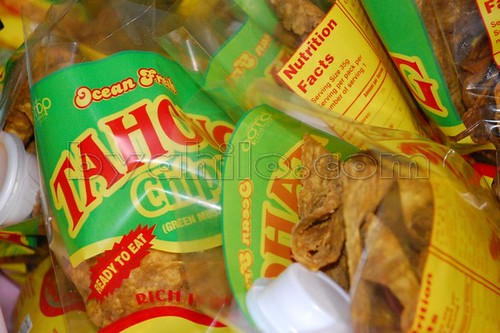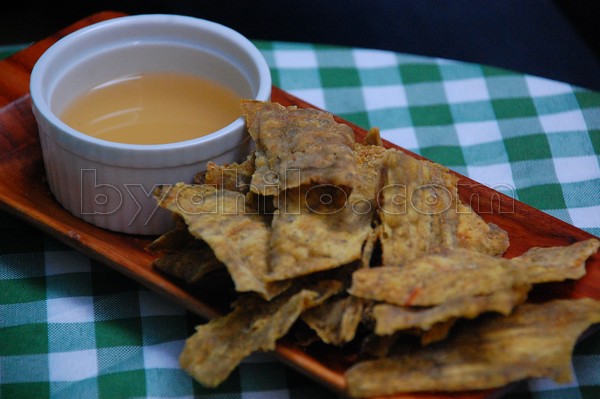Day: September 23, 2008
Lumad Basakanon prepares for Sinulog 2009
Back to back Sinulog Free Interpretation Champion group Lumad Basakanon is now on high gears as it prepares to return to the Sinulog 2009 Streetdance competition.
In a message sent to me a few weeks back, some Lumad Basakanon members confirm the news that they are now starting to formulate their dance routine for Sinulog 2009. Rehearsals are held at the Basak San Nicolas Gym every Tuesday, Thursday and Saturday at 8PM.
Lumad Basakanon was declared the Free Interpretation Category Champion of Sinulog Festival for 2007 and 2008.
They were also named as Grand Prize Winner in the Aliwan Fiesta for 2006, 2007, and 2008. Making them Three Million Pesos richer.
The pride of Cebu landed as first runner up last June 29 during the revival of the Sangyaw Festival in Tacloban City.
Lumad Basakanon has been known for their simple choreography yet very solid execution. Their trademark choreography and formations has earned them applauses wherever they perform.
This Sinulog 2009, Lumad Basakanon will be aiming for a three-peat championship. A Grandslam win for the dancers of Barangay Basak San Nicolas, Cebu City.
Check the FULL Sinulog 2009 Schedule here
Get this shirt for FREE!!!
A Very Private Thing
I RECEIVED some interesting invitations these past two weeks, all having to do with meeting the people who buy and read our books. One of them was at the Pistang Panitik portion of the Manila International Book Fair, where I joined a panel of writers that included Neil Garcia, Vim Nadera, Roland Tolentino, and Nick Pichay. We had been roped together to talk about the current state of Philippine literature in our respective genres and languages, and a roomful of enthusiasts who had gamely trooped out to the SMX Exhibition Center at the Mall of Asia on a Sunday morning engaged us in a lively conversation.
One point that came up (that always comes up at such forums, I must say) had to do with “Filipino-ness” in writing. Could one leave the country or any references to it out of one’s writing and expect success? Why not, said Neil—arguing, quite persuasively, that much of contemporary poetry is intensely personal anyway and barely grounded in some national space. I took issue with this just slightly in terms of fiction, which tends to be more culture-bound, remembering students and workshoppers who would turn in stories set in New York or Boston, not from a Filipino but a wannabe-American (or wannabe-published-in-The New Yorker) mindset, failing miserably just on the level of idiom, not to speak of the culture.
As far as I’m concerned, anything written by a Filipino is Filipino—including this half-amusing, half-annoying part of us that fantasizes about not being Filipino. Also, it’s about time that—having gone everywhere on the planet—we began writing about it through our eyes and experience. And indeed, as Neil suggested, why can’t we have thoughts and feelings that transcend the nation?
But that kind of penetrating, overarching vision comes, I think, at the peak and in the maturity of one’s writing rather than at the beginning. Call it old-fashioned, but you earn the right to write about other worlds by first mastering your own, as well as your own voice; and then you can sally forth and pretend to be anyone and anything, which is one of the great joys of writing.
I also had the pleasure of meeting with the members of two book clubs that had chosen Soledad’s Sister as their, uhm, penance for the month. It isn’t very often that readers get to meet and chat with the authors of their books; but conversely, authors—especially here—don’t get much of a chance to see how their work is received by their readers (except through that rare piece of thorough but accessible Filipino literary criticism, beyond the backslapping of columnist-friends, the vitriol of pathological haters, and the smog of academic jargon).
It was an eye-opening, humbling experience to hear lay, non-academic readers express their feelings about characters and situations I created. Every author hopes that his or her readers will take their work seriously, but when they do, you start hoping “Not too seriously!” You wish fervently, all of a sudden, that you had another chance to rewrite that passage or clarify that statement. I was amazed and flattered by how well my readers knew Walter, Rory, and Soli like they lived across the street, by how invested they were in the fate of these characters, whom I may have dreamed up one Sunday afternoon between a jog and a shower.
The most common question I’ve heard people ask about Soledad is why it ends the way it does—why I’m not more explicit or forthcoming about Soli’s ultimate fate. They feel cheated out of a proper closure. I think it’s a legitimate gripe—heck, I’d say the same thing, too—but it’s something I don’t think I can do too much about, given my suspicion (laid out in the first chapter) that life isn’t that neat, and will often deny us the closure we crave, the body we can grieve for and grieve over.
That’s as much as I should probably say about the novel and what it means to me, which could be very different from what it means to my reader, and happily so. I’ve always believed that authors should write their novels and then shut up to let the reader’s imagination take over the piece. Maybe that’s why I’ve never joined a book club myself, thinking of writing and reading as a very private thing, like making love or passing waste. But I have to thank these two book clubs—and my friends in them who invited me, broadcaster Twink Macaraig and writer-editor Linda Panlilio—for affording me the rare pleasure of a direct conversation with the people I write for and write about.
 I DIDN'T know what to expect when I went down to Kidapawan City in North Cotabato a couple of weekends ago on a data-gathering trip for another book I’m working on. I’ve been to various parts of Mindanao many times, but I’d never been to Cotabato, and the past weeks had been full of news about rebel attacks and bombings in that part of the country, so—despite the assurances of my hosts that Kidapawan was far from the fighting—I didn’t feel too good about making this particular trip at this particular time.
I DIDN'T know what to expect when I went down to Kidapawan City in North Cotabato a couple of weekends ago on a data-gathering trip for another book I’m working on. I’ve been to various parts of Mindanao many times, but I’d never been to Cotabato, and the past weeks had been full of news about rebel attacks and bombings in that part of the country, so—despite the assurances of my hosts that Kidapawan was far from the fighting—I didn’t feel too good about making this particular trip at this particular time.But a job’s a job, and the chance of going even part of the way up Mt. Apo was too good to pass up. I’m no mountaineer—two laps around the UP Academic Oval and a few games of badminton are about all I can do for exercise—but I like elevated, panoramic views, and you can’t get any more elevated in these islands than on Mt. Apo—at 10,311 feet (3,144 meters), the country’s tallest peak.
As it turned out, Kidapawan (which sprawls at the mountain’s foot) was a prettier and far more pleasant place than I could have imagined, with concrete boulevards as wide as EDSA, split by long rows of luxuriant trees. The cleanliness and the amenities (free wi-fi in the lobby) of AJ Hi-Time Hotel in downtown Kidapawan would put many posher establishments in bigger cities to shame.
It seems that almost anything grows—and grows big—in the soil of Kidapawan, otherwise known as the “City of Fruits and Highland Springs.” Aside from being the province’s financial center, much of the wealth of this city of 120,000 comes from the once-controversial geothermal project put up on Mt. Apo’s slopes by the Philippine National Oil Company’s Energy Development Corporation, since privatized and now being operated by the Lopez group.
We went up just high enough to appreciate the hot springs in Lake Agco, now visited by droves of lowlanders eager for a soak in the steam-fed waters. We were met by the deafening screech of cicadas on the mountain’s foothills. At midday the gray wet clouds rolled in, and it was hard to tell which was fog and which was steam; at some point it all became a pelting rain. I got drenched, using my thankfully substantial body to cover my precious camera and the laptop in my backpack, but the sting of sweet rain was a bracing reminder of another kind of life in another part of the country, one we only read about but hardly ever visit, preferring the faux temples of Repulse Bay and the Starbucks on Orchard Road.
Tahong Chips: Reinventing Bacoor’s main produce
Bacoor may be known for its rich history and Philippine revolutionary legacies, but it is also known for at least two culinary specialties – tahong/ talaba and halo-halo!
In the olden days, about 760 hectares of the land in Bacoor were dedicated to fishpond operations. But due to the rapid shift from an agriculture-based economy to a residential/commercial urban center, Bacoor has only about 100 hectares earmarked for agriculture. Salt production, fishing, oyster and mussel culture, are now being threatened to near extinction.

Nevertheless, the people of Bacoor will not just let tradition die.
For one, Bacoor’s shores abound with mussels and oysters (tahong at talaba). Manila chefs and foodies do not mind trekking to Bacoor to get their supply of sweet, safe and fresh oysters.
This abundance in oysters has spawned an industry in Bacoor. Since the harvest of oysters cannot all be consumed at a particular time, the need to convert the tahong into something else made sense and eventually resulted in Bacoor-made Tahong Chips.
Soon, Tahong Chips were fastly being snatched from the shelves for balikbayans and OFWs. Pasalubong centers nationwide are not complete without Tahong Chips.
Part 2: Digman Bacoor Halohalo, soon!
Sa kuko ng panganib
Nabanggit sa The Dawn newspaper sa Pakistan na isa sa sobra 40 ka tao na nasawi sa suicide attack sa Marriott Hotel noong Sabado ng gabi sa Islamabad ay Filipino
Hindi sinabi kong turista o nagtatatrabaho sa hotel ang Filipino na namatay. Hindi pa rin natin alam kung nag-iisa lang ang Filipino na nasawi. Wala pang report ang Department of Foreign of Foreign Affairs.
Isang truck na puno ng bomba ang umararo sa harap ng Marriott Hotel, na paboritong lugar ng mga dayuhan. Ang suspetsa sa may kagagawan ng kahindik-hindik ng pangyayari ay Al Qaeda o Taliban. Warning raw sa mga bagong pinuno ng Pakistan na mukhang maka-Amerikano mas malagim pa ang mangyayari kung hayaan nilang mag-operate ang military ng U.S sa loob ng Pakistan.
Dahil sa dami ng ating sariling problema, hindi natin masyadong pinapansin ang mga nangyayari sa ibang bansa. Isip natin malayo naman ang Pakistan. Ngunit ang pagkasawi ng isang Filipino doon ay nagsasabi na kahit gaano kalayo, nagkakaroon ng koneksyon ang Filipino dahil sa ating mga overseas Filipino workers.
Nasa Pakistan ako noong Mayo.Ang lakas ng nasyunalismo ng Pakistan. Sa gitna ng kanilang laban sa terorismo, nagsusumikap silang matugunan ang problema ng kahirapan.
Mas malaki ang problema nila doon dahil maliban sa problema nila sa Taliban na napunta sa kanila mula sa Afghanistan, may problema rin sila sa kanilang boundary sa India. Kaya sila may nuclear bomb.
Nitong mga nakaraang linggo, sunod-sunod ang pasabog sa iba-ibang parte ng Pakistan. Bago kasi ang mga opisyal. Kamakailan ay nag-resign si Pervez Musharraf bilang presidente.
Kaya kahit paano, may panganib rin sa mga buhay ng mga Filipino doon dahil wala namang pinipili ang bomba. Sobra mga 3,000 ang mga Filipino sa Pakistan. Karamihan ay professionals na nagta-trabaho sa telecommunications at sa mga hotel. Hindi sila maaring umuwi kahit medyo delikado ang sitwasyon doon dahil hindi nila kikitain dito ang kinikita nila doon.
Ito ang kalbaryo ng mga OFW. Hindi lang sa Pakistan. Noong isang araw ni-report na 25 na namang Pinoy ang na-hostage ng mga pirata sa Somalia. Kailang lang pinalaya ang isang grupo ng Filipino na seaman na nahostage rin.
Sa financial crisis na yumayanig ngayon sa boong mundo, dolyar mula sa mga OFW na umaabot sa P200 bilyon ang sumusuporta sa bayan.. Kaya kampante ang administrasyong Arroyo.
Sa panganib na sinusuong ng mga OFW para lamang makaahon sa kahirapan, yan ba ang masasabi ni Arroyo na umuunlad na ekonomiya?
Wait, there’s more!: Don’t have Paypal yet? What are you waiting for? Sign up now!



